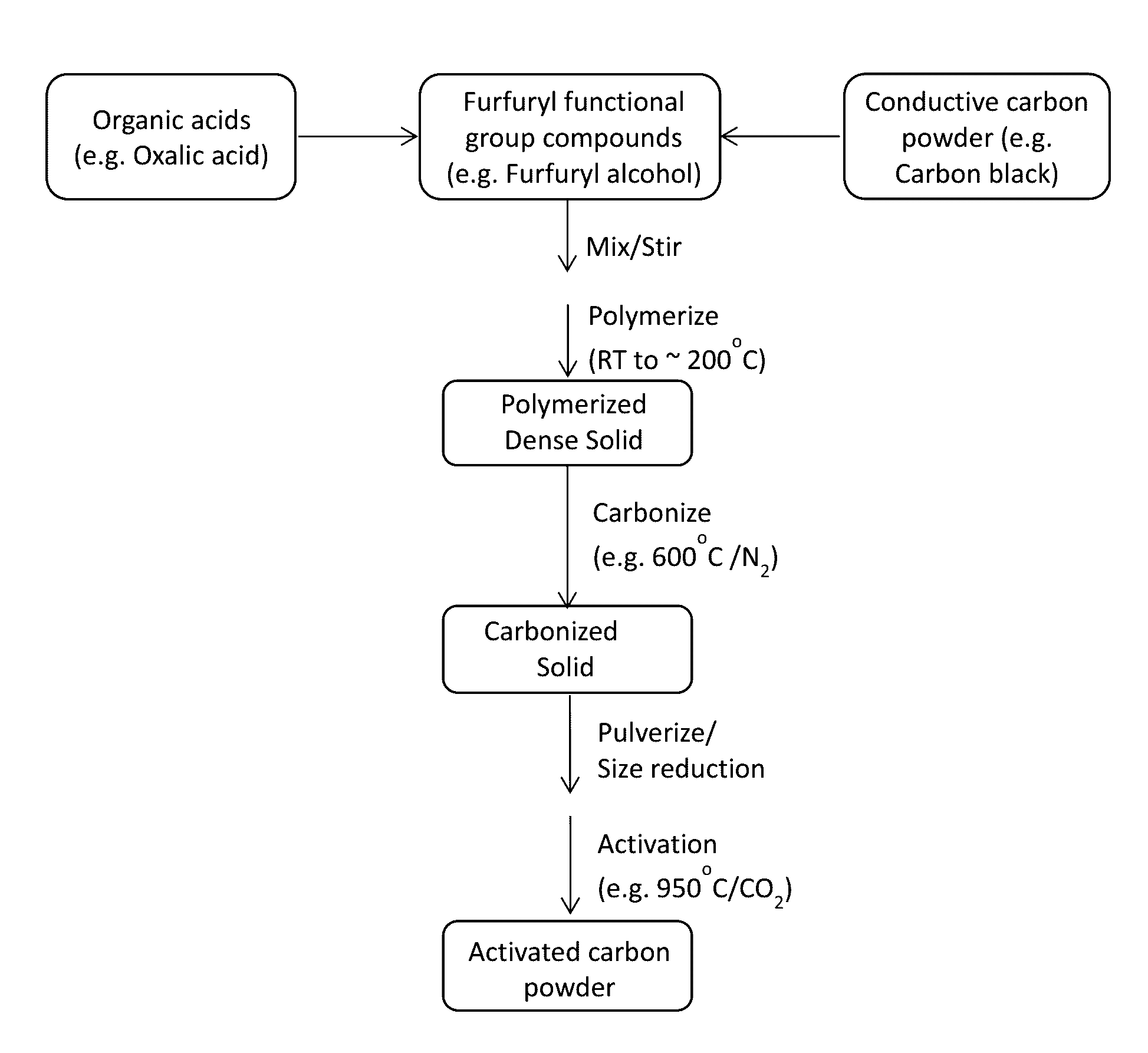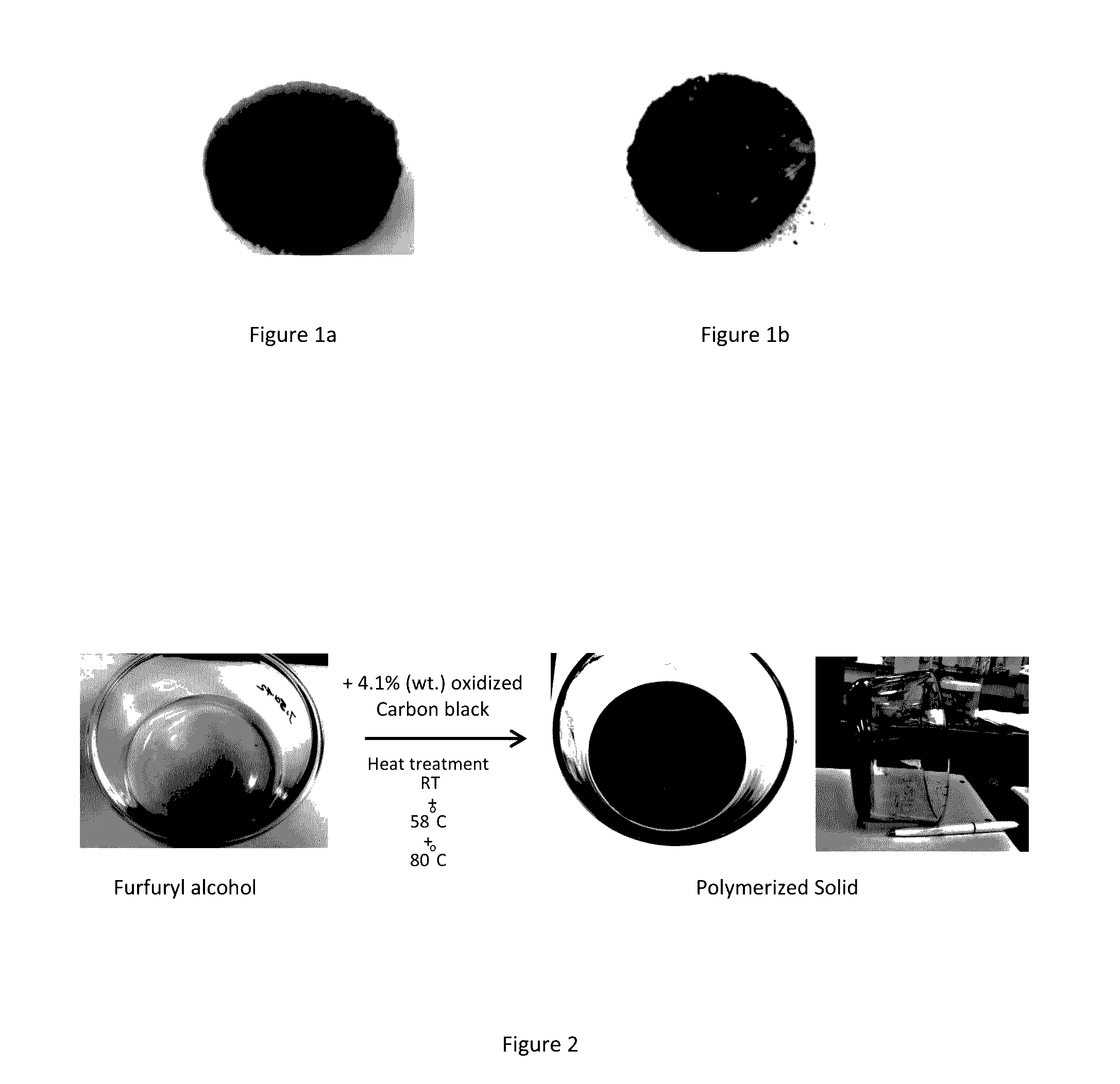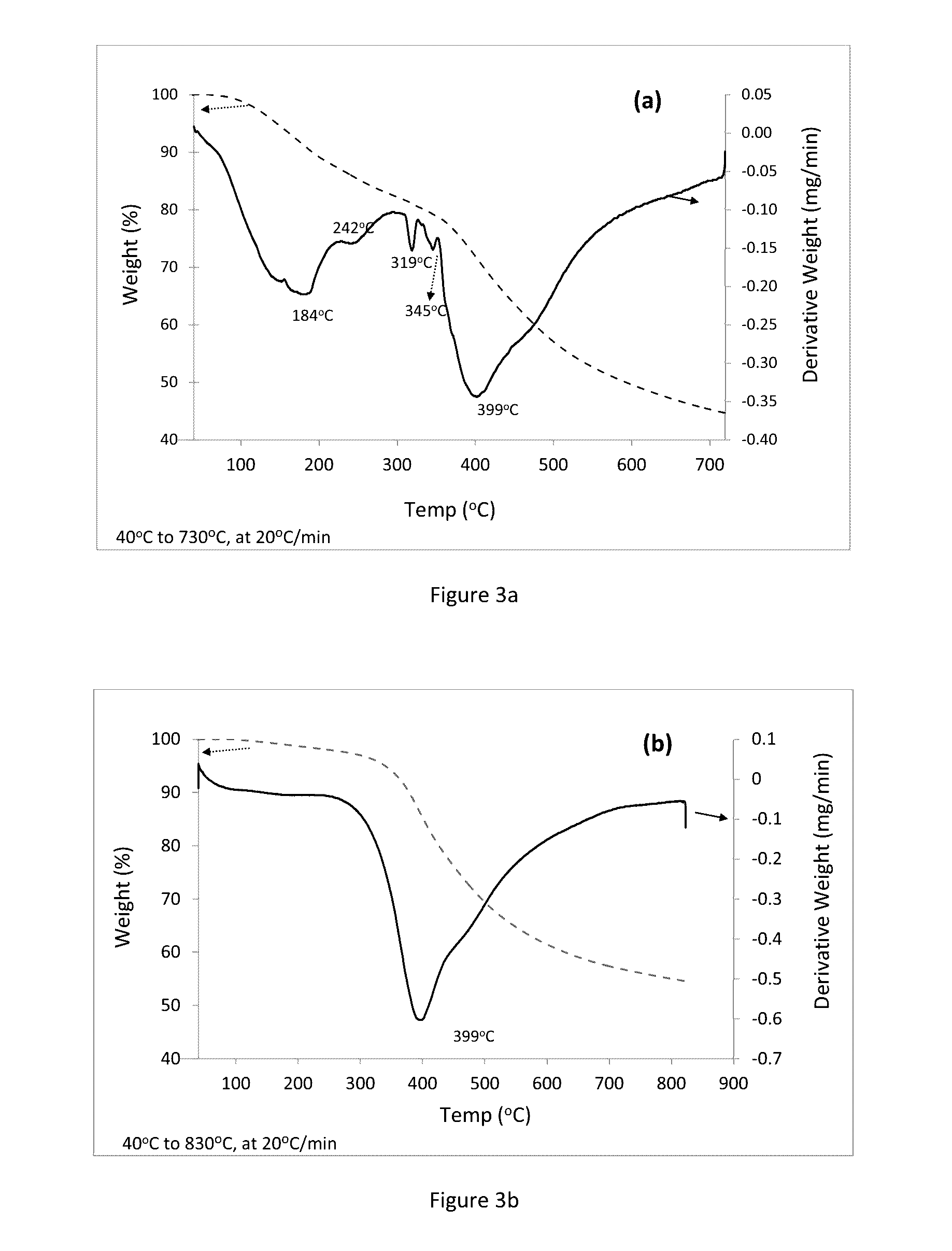Method of making activated nano-porous carbon
a technology of activated nanoporous carbon and activated nanoporous carbon, which is applied in the direction of cell components, chemistry apparatus and processes, and other chemical processes, can solve the problems of requiring a much more involved and expensive manufacturing procedure, and little control over the purity of starting materials, so as to eliminate a costly etching step and the effect of the manufacturing process
- Summary
- Abstract
- Description
- Claims
- Application Information
AI Technical Summary
Benefits of technology
Problems solved by technology
Method used
Image
Examples
example 1
[0046]In this embodiment of the method, 56.5 gms of furfuryl alcohol (#W249106, >=98%, from Sigma Aldrich, St. Louis, Mo.) was stirred for 30 minutes in a glass jar. Stirring was performed using an overhead stirrer operating at around 200 rpm. Next, 5 gms of oxalic acid (#75688, anhydrous, ≧99.0%, from Sigma Aldrich, St. Louis, Mo.)—representing a weight ratio of 8.8%—was then added over a period of 1 minute, and stirring was continued for another 30 minutes. At this point, the solution was allowed to stand at room temperature for several hours before 1.5 gms of carbon black (C-NERGY SUPER C45 from Imerys, Willebroek, Belgium) was added to the solution and stirred for another 30 minutes. The mixture was then allowed to stand at room temperature until it formed a pasty solid that held its shape when the container was tilted. Next, the material was placed in an oven at 58° C. under atmosphere and under atmosphere until it formed a solid that could be handled. The weight loss of the ma...
example 2
[0047]In this embodiment 150 ml of Furfuryl alcohol (#249106, >=98%, from Sigma Aldrich, St. Louis, Mo.) was stirred for 30 mins, using the same set up described earlier. Next, a mixture of organic acids comprising: i) Oxalic acid=3.8 gms (#75688, anhydrous, ≧99.0%, from Sigma Aldrich St. Louis, Mo.), ii) Maleic acid=4.9 gms (#M0375, ≧99.0% (HPLC), from Sigma Aldrich St. Louis, Mo.), and iii) L-(+)-Tartaric acid=6.3 gms (#T109, ≧99.5%, from Sigma Aldrich St. Louis, Mo.) was added and stirring was continued for another 45 minutes. At this point 75 ml of acetone (HPLC grade) was added to the solution and stirred for another 15 minutes. The mixture was allowed to stand at room temperature for several hours. Next, 4.5 gms of carbon black (C-NERGY SUPER C45 from Imerys, Willebroek, Belgium) was added and the mixture stirred for an additional 135 minutes. It was then allowed to cure at room temperature, under atmosphere. During this time it was periodically and manually stirred to break u...
example 3
[0052]This embodiment is similar to example 2, but with differences in the polymerization and carbonization steps. Similar amounts of furfuryl alcohol and organic acids were used. The acid powders were added to the furfuryl alcohol and stirred for 120 minutes. The solution was allowed to sit at room temperature for several hours followed by the addition of 4.5 gm of carbon black powder and continued stirring (no acetone was added in this example). Once the rate of weight loss of the material approached zero, it was then subjected to heat treatments at 87° C., 110° C. and 198° C. (under atmosphere) to make the polymerized solid. The lower temperature 40° C. step, from the previous example has been eliminated here.
[0053]Next, the polymerized material was carbonized at 600° C. This was also done in two steps: i) soaking at 360° C. under atmosphere, and ii) soaking at 600° C. under nitrogen. The carbonized material was again pulverized into smaller particles in a mortar and pestle, resu...
PUM
| Property | Measurement | Unit |
|---|---|---|
| Temperature | aaaaa | aaaaa |
| Temperature | aaaaa | aaaaa |
| Temperature | aaaaa | aaaaa |
Abstract
Description
Claims
Application Information
 Login to View More
Login to View More - R&D
- Intellectual Property
- Life Sciences
- Materials
- Tech Scout
- Unparalleled Data Quality
- Higher Quality Content
- 60% Fewer Hallucinations
Browse by: Latest US Patents, China's latest patents, Technical Efficacy Thesaurus, Application Domain, Technology Topic, Popular Technical Reports.
© 2025 PatSnap. All rights reserved.Legal|Privacy policy|Modern Slavery Act Transparency Statement|Sitemap|About US| Contact US: help@patsnap.com



